SAS Urban Survival Handbook (52 page)
Read SAS Urban Survival Handbook Online
Authors: John Wiseman
Tags: #Health & Fitness, #Reference, #Survival, #Fiction, #Safety, #Self-Help, #Personal & Practical Guides, #General, #Survival Skills

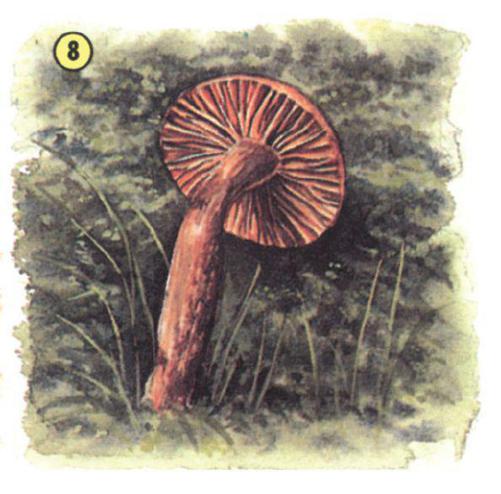
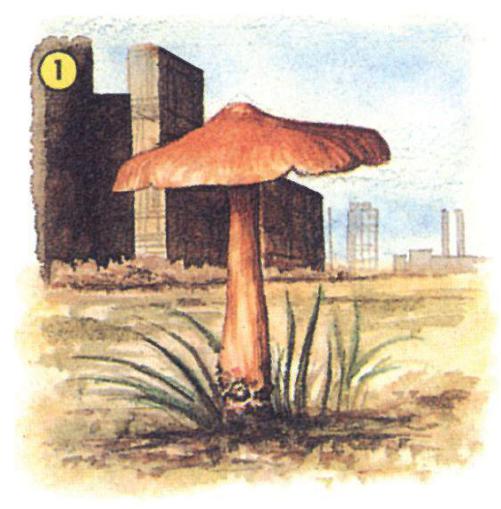
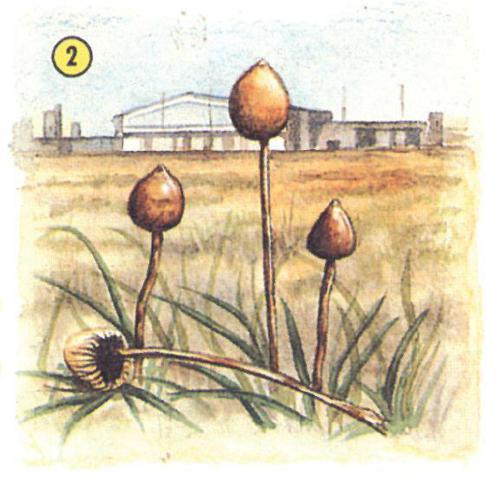
Never underestimate the deadly toxicity of poisonous fungi—you don’t necessarily need to eat a large quantity to be poisoned. What’s more, not all poisonous fungi have an unpleasant taste so it’s easy to be fooled into believing you’re eating an exible variety. You may not even realize you’ve been poisoned until 8 to 14 hours later with some deadly fungi, when the first symptoms start to develop (perhaps abdominal pain, vomiting and diarrhoea). For some poisonous fungi there is no known antidote.
1
▶Cortinarius speciosissimus
Found, singly or in small groups, near conifers, often among mosses. Red-brown cap with yellow margins, velvety texture. The closely related
C. orellanus
is slightly lighter coloured and grows in broad-leaved woods. Both smell radishy. Cap diameter: 2.5-8 cm (1-3 in).
DEADLY.
2▶Liberty cap
Psilocybe semilanceata
Found scattered by paths in fields, heaths and lawns in summer/autumn. The gills begin cream but darken almost to black with age. Cap is sticky when damp. Cap diameter: 0.5-1.5 cm (1/4- 1/2 in).
Contains LSD-like compound. May cause serious physical damage.
3▶Sweating mushroom
Clitocybe dealbata va. sudorifica
Commonly found scattered in deciduous woods. Crimson to pale pink in colour. Cap diamater: 1-4 cm (1/2-1 1/2 in).
Contains toxins which cause severe nausea, sweating and circulation disorders. Serious but seldom fatal.
4▶Red-staining inocybe
Inocybe patouillardii
Found in grass near beech and other woods. Cap is white to yellow, discolouring where bruised to pink. Gills white to brown. Smells fruity. Cap diameter: 3-7 cm (1 1/4-2 3/4 in).
DEADLY.
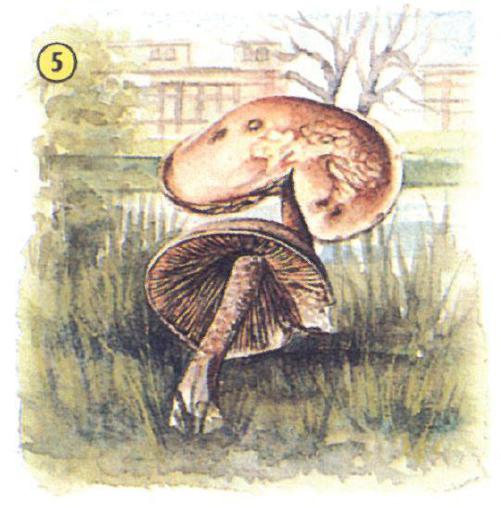
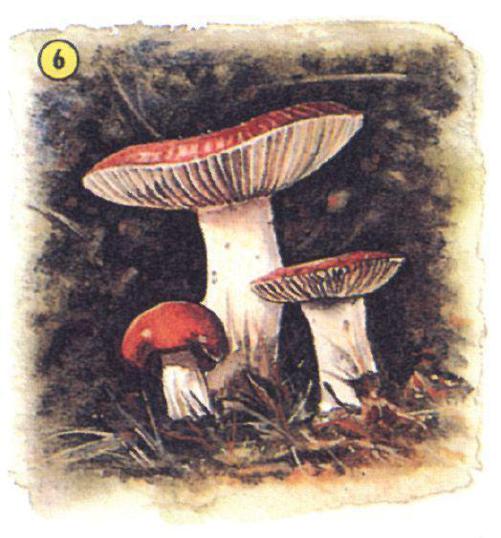
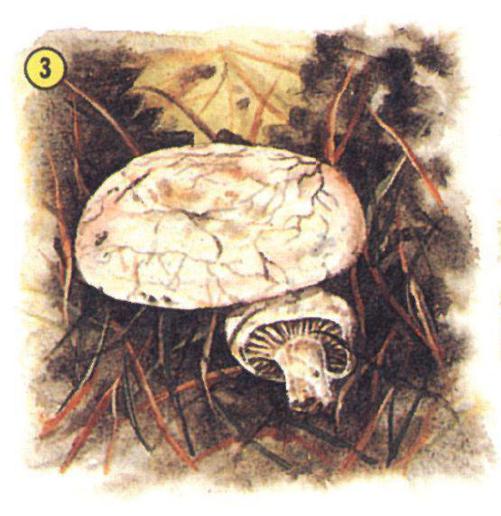
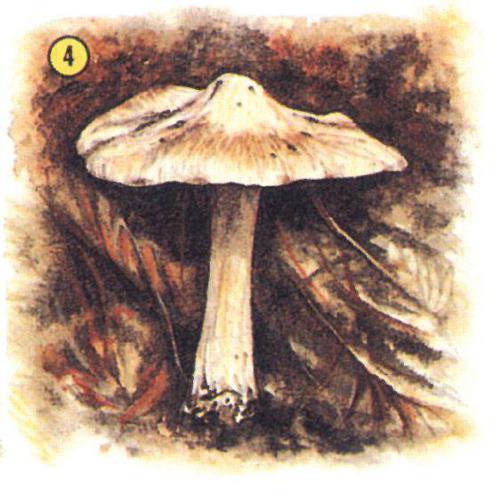
Symptoms develop rapidly: vomiting, diarrhoea, collapse.
5▶Poison pie
(Fairy-cake mushroom)
Hebeloma crustuliniforme
Found in autumn, growing in groups or rings in rich soil in deciduous woods and in gardens. Cap is sticky when moist, shiny when dry. Smells of radishes. Cap diameter: 3-9 cm (1 1/4-3 1/2 in).
Poisonous. Symptoms: vomiting, diarrhoea, respiratory difficulties.
6▶Emetic russula
(Sickener)
Russeula emetica
Found in autumn on moist ground in woodland and parks. The cap is scarlet with shiny, moist surface. Flesh smells of coconut. Tastes very peppery. Cap diameter: 2.5-7.5 cm (1-3 in).
Not poisonous if cooked, but powerful emetic effect if eaten raw.
7▶Brown roll rim
Paxilus involutus
Common in woods, especially beech and birch. This species is commonly eaten in Western Europe. In wet weather, cap surface glutinous. Cap diameter : 4-20 cm (1½;-8 in). Very common.
Poison accumulates in the body and can eventually cause liver failure. AVOID.
8▶Alcohol inky
(Common inkcap)
Coprinus atramentarius
Grows on trees, stumps and buried wood, usually in clusters. Cap diameter: 5-7.5 cm (2-3 in). Edible but, as with some other
Coprinus
, contains substance like Antabuse (drug used to treat alcoholics). Problems occur only if alcohol is consumed within 1-2 days of eating. Flushing of face and neck, tingling fingers, headache and nausea, although symptoms will pass.
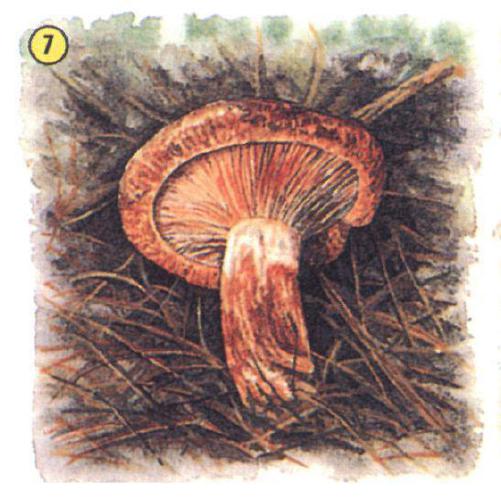
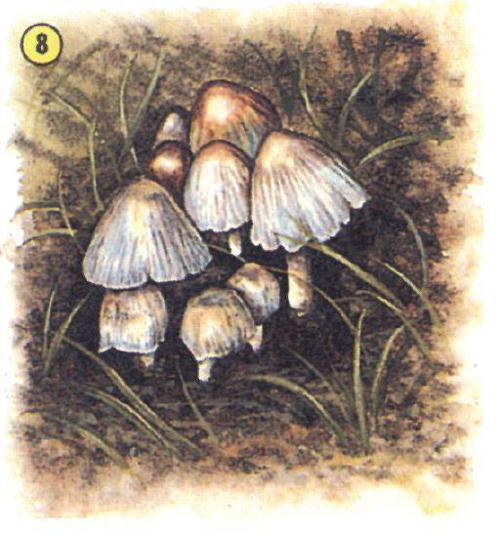
Fire!
Poisonous fumes and smoke claim many more lives than fire itself, and there are potentially lethal substances in every home and workplace. Knowing the risks, devising escape drills and understanding fire could save your life.
FIRE FACTS
Know the enemy • The fire triangle • How fire spreads • Fire in the home • Fire at work • Public buildings • Flashover • How fire kills • Explosion
EQUIPMENT
Smoke detectors • Fitting • Fire extinguishers • Fire blankets • Fire escapes • Fire ladders • Fireproofing • Combustion-modified foam
DRILLS
At home • Upstairs • Night patrols
FIRE!
At home • Seconds count • Emergency!
ESCAPE!
Moving through a burning building • Testing all doors • Staying low • Fireman’s lift • Trapped • Jumping • Getting help
FIRE FACTS
 Fire is an ever-present threat to life and property in the urban environment. In Britain alone there are about 50,000 accidental domestic fires a year—at least 70 per cent of fire deaths occur in the home. There are almost monthly reminders from around the world of the dangers of fire in places like underground stations, sports stadia and hotels.
Fire is an ever-present threat to life and property in the urban environment. In Britain alone there are about 50,000 accidental domestic fires a year—at least 70 per cent of fire deaths occur in the home. There are almost monthly reminders from around the world of the dangers of fire in places like underground stations, sports stadia and hotels.
